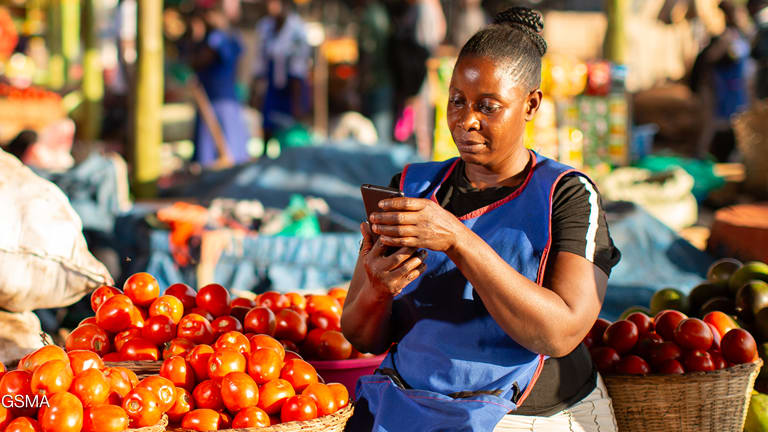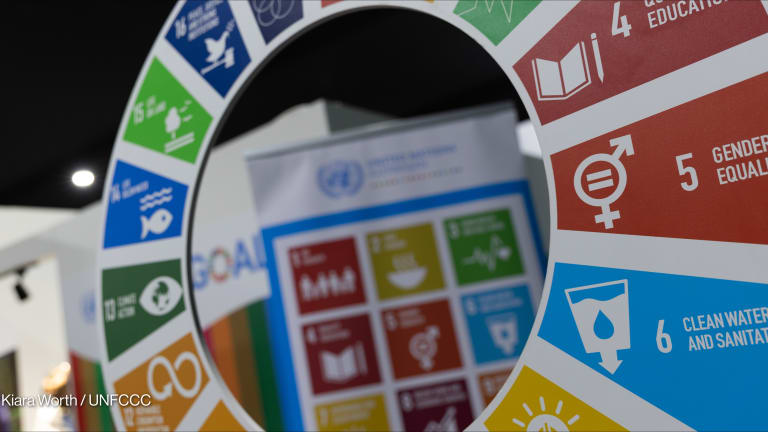
SAN FRANCISCO — The United Nations refugee agency and the trade body representing mobile network operators are working together to research the impact of connectivity on refugees and host communities.
UNHCR and the GSM Association signed a memorandum of understanding at the U.N General Assembly in September 2018. This builds on research they have done together on the ways mobile phones serve as lifelines for refugees, migrants, and displaced people.
“We need to … deliver and scale the mobile-enabled solutions that will truly accelerate our achievement of the SDGs.”
— Yasmina McCarty, head of mobile for development, GSMAThey will continue the conversation at Mobile World Congress next week, where leaders in technology and development are likely to form new deals to harness the potential of mobile technology in areas such as humanitarian response, health, financial inclusion, and education.
As digital technologies change both the opportunities and challenges for international development and humanitarian response organizations, donors and NGOs are increasingly interested in working with the mobile industry to accelerate progress on the Sustainable Development Goals.
Shared priorities
Closing the mobile gender gap is one example of a key priority shared by the global development community and the mobile industry. While development experts want to ensure usage so that women aren’t left behind, closing the gap is also “an important commercial opportunity for the mobile industry,” Yasmina McCarty, head of mobile for development, a team at GSMA focused on ways that technology can reduce inequalities, told Devex via email.
A mobile gender gap of 23 percent exists in low- and middle-income countries, with 313 million fewer women than men using mobile internet, according to a 2018 report by GSMA, which unites 750 operators with more than 350 companies in the broader mobile network ecosystem.
The biggest barriers to mobile ownership and mobile internet use for women include affordability, literacy, and digital skills; a perceived lack of relevance; and safety and security concerns, according to McCarty.
There is some evidence that the gap is narrowing, and GSMA will release new numbers in a 2019 mobile gender gap report publishing next week, but progress is not happening as quickly as it needs to, McCarty said.
The industry could see an estimated $140 billion in revenue from low- and middle-income countries over the next five years, she added. And the global economy would benefit from more women using mobile phones, with an expected $700 billion in gross domestic product growth across LMICs in the next five years if the gender gap is closed, according to McCarty.
Digital humanitarian response
At the World Economic Forum Annual Meeting in Davos, Switzerland, in January, UNHCR helped to bring mobile network providers together with ministers of finance and planning to talk about ways to tackle the policy and regulatory barriers to digital humanitarian response.
Making progress in this area would benefit the network providers who want to serve more people, the refugees who lack access to connectivity, and some host countries that are seeking better coverage, said Kelly Clements, deputy high commissioner at UNHCR, who spoke with Devex in Davos.
“Gone are the days where refugees are passive aid recipients,” said Clements, who is attending the Mobile World Congress to participate in a session on inclusion.
Technology can give refugees a voice, but as new capabilities such as digital identity become more central to humanitarian assistance, it can also leave those who are offline further behind. Still, mobile phone access is expanding rapidly, with 93 percent of refugees covered by 2G and 3G networks, according to UNHCR.
Now there is a need for multisectoral perspectives to weigh the tradeoffs between opportunities such as “good digital identity” and risks including data privacy — conversations that will take place at MWC.
“A lot of organizations are trying to prepare for the future, and that includes diversifying partnerships, because we need to diversify thoughts that go into solving the problem,” said Christopher Earney, who leads innovation work at UNHCR.
Next week, UNHCR will release new research outlining the legal and regulatory barriers that prevent refugees from registering mobile SIM cards or opening mobile money accounts.
Accelerating progress on the SDGs
GSMA often highlights that the mobile industry was the first in the world to commit to the SDGs. Working in partnership with development and humanitarian organizations, the trade group has advocated for policy recommendations at high-level platforms such as the U.N. General Assembly, and it is working with host country governments to incorporate the needs of forcibly displaced people into national policy, particularly when it comes to the proof of identity to access mobile services.
Last year, industry representatives at GSMA took a look at progress and gaps in their work on the SDG agenda. And while emerging technologies such as artificial intelligence will be a major focus at the Mobile World Congress next week, so will the global challenges they can help to address.
“As we celebrate the strong progress we have made against the SDGs over the past three years, we recognize that we must also do more, faster, if we are to achieve these audacious goals,” McCarty said.
She referenced the 2018 Mobile Industry Impact Report, outlining how the mobile industry, both on its own and together with partners, is making an impact across all 17 SDGs.
“We need to extend mobile connectivity to those that remain offline, and deliver and scale the mobile-enabled solutions that will truly accelerate our achievement of the SDGs,” she added.








